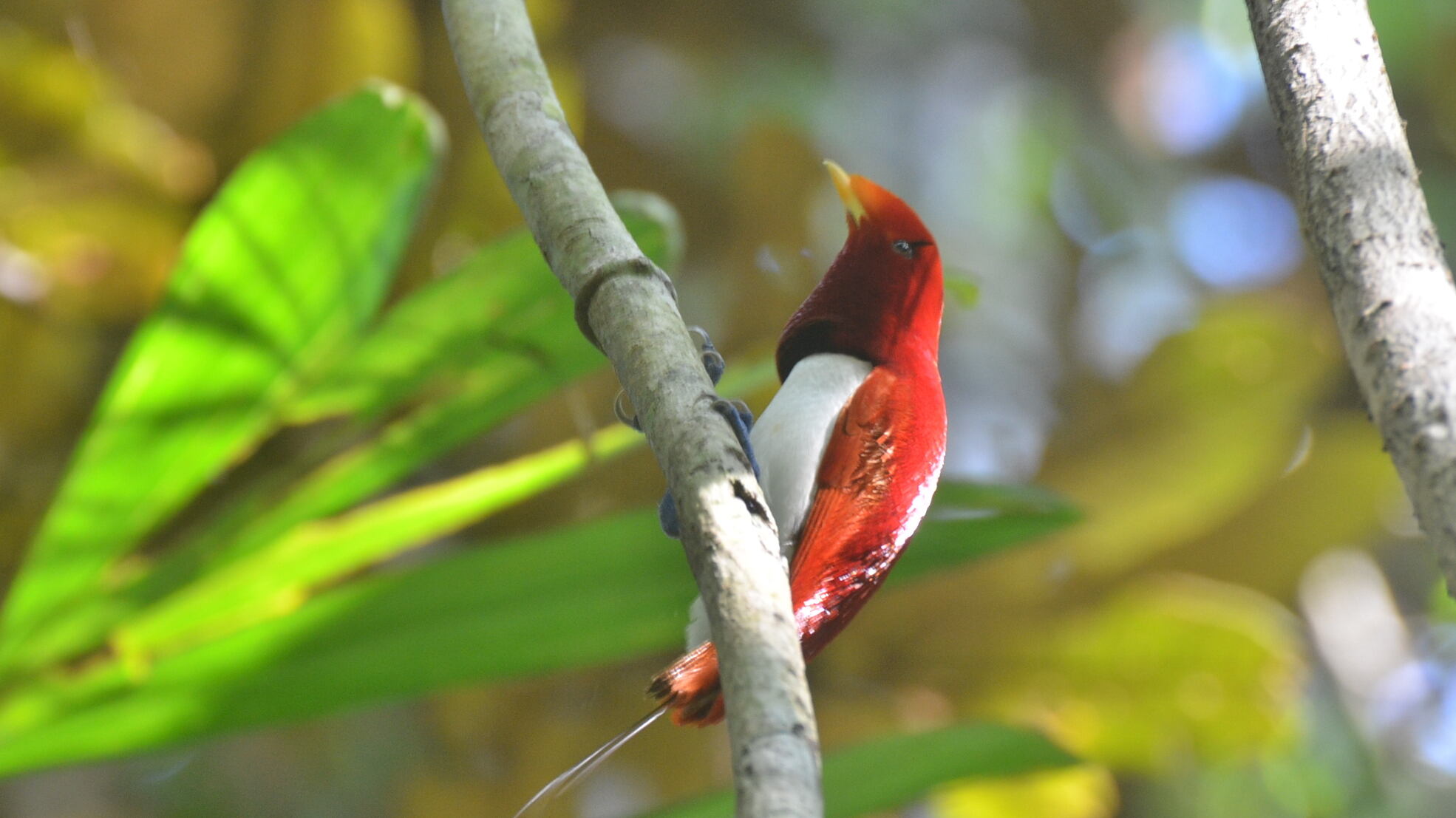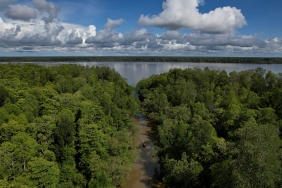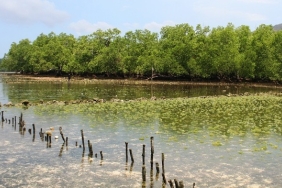OBSERVING THE BEHAVIOR OF BIRDS OF PARADISE IN A TRUE NATURE LABORATORY
Humans and wildlife cannot survive on Earth without trees. Compared to other ecosystems, the composition of tree species is more common in forest ecosystems. This importance is one of the reasons for forest conservation. But is this the only reason to conserve forests?
In Papua, there are more than 250 tribes that live in and around forest areas, and manage forests wisely based on their hereditary knowledge. One community group that manages forests based on customary norms is the indigenous community in Rhepang Muaif Village. One form of management is by making their customary territory an ecotourism area for bird of paradise observation. The existence of the ecotourism area is intended so that the life of birds of paradise in nature can be maintained, and at the same time provide economic benefits for the surrounding indigenous people.
According to a survey conducted by WWF in 2016, there are around 84 species of birds in the Rhepang Muaif forest, and six of them are birds of paradise. The six bird of paradise species are Cicinnurus regius, Manucodia ater, Paradisaea minor, Ptiloris magnificus, Seleucidis melanoleuca and Drepanornis bruijnii. The diversity of bird species and the beauty of the bird of paradise dance is a special attraction for tourists visiting this ecotourism site. In the 2019 period, there were 400 tourist visits recorded, which of course also had a significant impact on improving the economy of the management group and the surrounding community.
From the results of research and surveys of bird species diversity by the Cenderawasih University research team and WWF in Rhepang Muaif in 2016, as well as similar research in the Yapen Islands in the same year, information was obtained related to the relationship between birds of paradise and their habitat as well as bird interactions that affect their behavior.
Related to habitat, ecologically, the loss of bird species from their habitat has a huge impact on forest regeneration. Various bird species actually act as seed dispersal agents. Birds will excrete seeds through their droppings from the fruits they eat, which then become new tree seeds. Great yellow birds of paradise (Paradiseae minor jobiensis) for example, are seed dispersers of "semang" trees or Jabon (Anthocephalus sp.) and Sengon (Paraserianthes falcataria). Both types of plants are the main material for making boats which are the main transportation for the people in Sawendui village. In other words, wider than ecological factors, the loss of bird species also has an impact on the economic, social and cultural life of indigenous peoples in Papua, because their lives are very dependent on the condition of the surrounding natural resources.
From its nesting behavior, the minor bird of paradise is more often seen in groups, while the dead-wire species (Seleucidis melanoleucus) is more solitary. In the wild, the dead-wire species is polygynous; a male can mate with several females at once. Males of this species are known for their striking black-olive head and wing feathers and bright yellow feathers on the chest and flanks. Twelve blackish wire-like filaments appear on the tail and can be moved independently to attract females. In addition, to attract females, the male bird chooses a part of the tree in the form of a vertical trunk (shoot) that has dried. If there are still leaves in the way, the male will clean them off in order to make them easily visible to the female. The wire-dead species is also known for its territorial agonistic behavior, which is the behavior of defending the vertical trunk as its "stage" from the invasion of other males.
Back to the forest, conservation and sustainable forest management help maintain forest ecosystems, schools and real (natural) laboratories.





